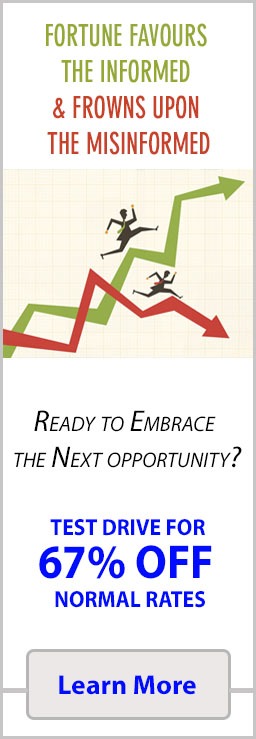
S&P 500 Advance/Decline Line: Indicator or Illusion?
Jul 14, 2025
The S&P 500 is climbing to new highs, but something feels off. Beneath the triumphant headlines, the advance/decline line is whispering a different story—fewer stocks participating, momentum narrowing, internals rotting while the index puts on a brave face. You pull up the chart, see the divergence, and wonder: is this the early warning you’ve been waiting for, or just another false prophet in a long line of indicators that promised clarity but delivered confusion?
Is the A/D line a true compass in the market wilderness, or just another filter with bias baked into its DNA? Traders lean on it like a crutch, trusting its ability to reveal what’s happening beneath the surface. But what if the map itself is warped? What if the very act of watching it changes what it shows? The uncomfortable truth is that the A/D line exists in that maddening space between signal and noise, between revelation and delusion.
Many traders treat breadth indicators like sacred texts, but markets have a way of turning yesterday’s edge into today’s trap. The question isn’t whether the A/D line works—it’s whether you can tell when it’s working and when it’s just reflecting your own biases back at you.
Everyone Wants a Crystal Ball
Breadth indicators feel comforting because they promise to show what’s really happening beneath the market’s surface. When the index is dominated by a handful of mega-caps, the A/D line seems to offer democratic truth—one stock, one vote, no manipulation by market-cap weighting. It’s the market’s popular vote versus the electoral college of cap-weighted indices.
But here’s the problem: once enough people trust a signal, it often loses its edge. The market is a living system that adapts to widespread beliefs. When everyone watches the same divergences, trades the same signals, and expects the same outcomes, the market has a nasty habit of doing something else entirely. The A/D line worked beautifully when it was the province of old-school technicians. Now that it’s on every trading platform and discussed in every market wrap, its signals arrive pre-discounted.
The human craving for certainty in uncertain terrain drives this obsession with indicators that promise to reveal hidden truths. But the terrain keeps shifting. What worked in the tape-reading era might not work in the algorithmic age. What signaled tops in the past might just reflect new market structures today. The A/D line isn’t wrong, but our certainty about what it means might be.
When the Indicator Fights the Price
Those moments when breadth diverges from price action are supposed to be the A/D line’s greatest value—the canary in the coal mine, the early warning system. The S&P 500 rips higher while the A/D line limps along, and technicians start whispering about unsustainable rallies and impending corrections. But is it early, or is it just wrong?
History is littered with divergences that lasted months before resolving, and others that simply disappeared without consequence. The 2017 rally saw persistent negative divergences that meant nothing as the market ground higher. The dot-com era saw breadth deteriorate for over a year before the crash finally came. Being early and being wrong feel identical in real-time, and the market has a way of stretching divergences until they break the believers, not the trend.
No indicator is holy. Everything depends on context, flow, and time window. The A/D line might be screaming “danger” while new market dynamics—passive flows, systematic strategies, sector rotations—render its warnings obsolete. The question isn’t whether divergences matter, but whether you can distinguish between a meaningful signal and yesterday’s pattern showing up in today’s market.
The Illusion of Participation
Just because 400 stocks are green doesn’t mean the market is healthy. Sometimes strength is thin and honest—a handful of giants carrying the load while the troops rest. Sometimes breadth is broad and meaningless—a thousand penny stocks bouncing while the real economy’s champions stumble. The A/D line counts bodies, not quality.
This is where the indicator becomes most deceptive. Broad participation in a low-quality rally might look healthy on the A/D line while setting up a broader collapse. Narrow participation by high-quality leaders might look weak while actually representing sustainable strength. It’s the quality of movement, not just the count, that matters.
The market’s structure has evolved, but the A/D line hasn’t. It treats a biotech micro-cap the same as Apple, a failing retailer the same as Microsoft. In an era of creative destruction and winner-take-all dynamics, is broad participation even desirable? Maybe the A/D line is measuring an outdated version of market health, like taking a horse’s pulse to diagnose a Ferrari.
The Line Is Real—But So Is the Illusion Around It
Even clean data can become deceptive when the observer injects bias. The A/D line is mathematical fact—stocks up minus stocks down, cumulative and simple. But the interpretation? That’s where human psychology takes over and turns signals into noise.
Traders force the A/D line to match their narrative. Bears see every divergence as vindication. Bulls explain them away as temporary distortions. The same data supports opposite conclusions depending on who’s looking and what they want to see. Confirmation bias doesn’t just affect what we look for—it affects what we see when we look.
The ancient wisdom holds: the more certain the chart looks, the more uncertain the outcome becomes. When divergences become obvious, when everyone sees the same pattern, when the financial media starts discussing breadth weakness—that’s often when the indicator stops working. The market is a mirror that reflects our collective beliefs, and when too many believe the same thing, the reflection changes.
When Everyone Sees the Same Thing
The A/D line isn’t wrong—but it’s not truth incarnate either. It reflects market participation accurately, but whether that participation matters depends on context that no indicator can capture. It’s a thermometer, not a diagnosis. It tells you temperature, not whether the patient is sick or just exercising.
The real illusion isn’t in the indicator—it’s in our need to make it mean more than it does. We want clarity in a system designed for ambiguity. We want reliable signals in a game that evolves to invalidate reliability. The A/D line offers one perspective on market health, valuable but incomplete, useful but not definitive.
When everyone sees the same divergence, it stops being a warning and becomes a trap. The market’s greatest trick is making the obvious look actionable right before it stops working. Use the A/D line, but don’t worship it. Let it inform your thinking without determining your actions. In the end, it’s just one more voice in the market’s endless conversation—worth hearing, dangerous to obey.
Why Investors Lose Money: Folly Disguised as Confidence
Most investors don’t lose money because they’re dumb—they lose because they’re convinced they aren’t. Watch any portfolio crater and you’ll find the same story: intelligent people making sophisticated arguments for positions that were doomed from the start. They didn’t lack information or analytical tools. They lacked the ability to see their own blind spots, to recognize when confidence had morphed into delusion.
Losses don’t happen in the absence of thought—they happen when thought gets hijacked by emotion and dressed up as logic. The market is littered with the accounts of people who could explain their trades in beautiful detail but couldn’t explain why they kept making the same mistakes. The failure isn’t intellectual; it’s the failure to recognize folly in motion, especially when that folly feels like wisdom.
Confidence without self-awareness is financial suicide in disguise. It’s not enough to know the market—you have to know yourself, and most investors would rather analyze anything else. They’ll study charts, dissect earnings, debate macro trends, but they won’t examine the patterns in their own behavior that turn winning setups into losing trades.
The Confidence Trap
Overestimating your edge while underestimating randomness is the most expensive mistake in markets. Every winning streak feeds the illusion that you’ve discovered something others missed, that your process is superior, that the profits prove skill rather than favorable variance. Noise looks like signal until it hurts—until that reliable pattern stops working and takes half your account with it.
The cruel irony is that confidence grows fastest when it should be questioned most. After a string of wins, investors increase position sizes, abandon risk rules, and start believing their own narrative. They mistake a favorable streak for a sustainable edge. The market loves this dynamic because overconfident money is the easiest money to take.
Real edge is rare and usually small. Most of what investors attribute to skill is actually luck filtered through hindsight bias. But admitting this feels terrible, so they construct elaborate explanations for random outcomes. They’d rather believe in their own genius than acknowledge the role of chance. This isn’t stupidity—it’s human nature weaponized against human wealth.
Investors Think Emotionally, Justify Logically
Watch someone chase a momentum stock at the top and they’ll give you ten logical reasons why it makes sense. But the real reason is simpler: it feels good to buy something that’s going up. Investors chase comfort—the comfort of joining winners, avoiding losers, following the crowd—then wrap these emotional decisions in rational explanations.
Actions are mechanical, triggered by crowd signals rather than independent insight. When everyone’s buying tech stocks, the urge to join becomes overwhelming. When panic selling begins, the need to escape becomes irresistible. These aren’t decisions—they’re reactions dressed up as strategy. The analysis comes after the emotional commitment, engineered to support what the investor already wants to do.
The classic example is buying more at the top because it “feels right.” The stock has been confirming your thesis by going up, your account is growing, confidence is high—so you add to the position right before it reverses. The logic sounds impeccable: “riding winners,” “pyramiding into strength,” “following the trend.” But the real driver was emotional validation, not analytical edge.
Losses Don’t Hurt Enough—Until They Do
Until someone’s truly crushed by the market, they think drawdowns are temporary inconveniences rather than permanent teachers. Small losses get dismissed as “part of the game,” medium losses get attributed to “market manipulation,” and by the time the big loss arrives, it’s too late to learn because survival becomes the only priority.
Pain is only useful if you reflect on its causes, but most investors skip the reflection and jump straight to the next trade. They want to “make it back” rather than understand why they lost it. This ensures they’ll repeat the same patterns—the same overleveraging, the same emotional entries, the same hope-based exits—until the cumulative damage becomes unrecoverable.
Real learning requires admitting that the loss wasn’t bad luck but bad process. It means acknowledging that your “high conviction” trade was actually an emotional bet, that your “risk management” was actually position sizing based on hope. But this kind of honest assessment is painful, so investors create cover stories that preserve ego while destroying capital.
Bias in Disguise: Smart People, Dumb Money
Intelligence often enables better rationalization of bad behavior rather than better behavior itself. Smart investors are frequently worse than average ones because they’re more capable of constructing elaborate justifications for terrible decisions. They can argue themselves into any position and defend it against any evidence.
We lie to ourselves not out of malice but vanity. The smarter the investor, the more sophisticated the self-deception. They don’t just buy overvalued stocks—they create complex models proving why traditional valuation doesn’t apply. They don’t just hold losers—they write essays about why the market is wrong. Intelligence becomes a tool for defending weak positions rather than identifying them.
This intellectual vanity is expensive. While simple investors might cut losses when they hurt too much, smart investors hold on because admitting error would damage their self-image as sophisticated thinkers. They’d rather lose money than lose face, even when the only audience is themselves.
The Cycle of Unaware Repetition
Losses aren’t random—they’re recycled. The same investor who got burned buying tech in 2000 got burned buying crypto in 2021. The patterns are identical, only the assets change. But without systematic review of past mistakes, investors can’t see the repetition. They treat each loss as unique rather than part of a pattern.
Investors rarely catalog their mistakes in actionable ways. They might remember losing money on a trade, but they don’t identify the specific decision patterns that created the loss. Was it entering on emotion? Sizing based on conviction rather than risk? Holding past the stop because of hope? Without this analysis, the same mistakes repeat with different securities.
Real intelligence is pattern recognition applied to your own behavior, not just the market’s. It’s noticing that you always buy the third day of a rally, always sell on the first red day, always abandon your plan when trades go against you. These patterns are more predictable than any market pattern, but they’re invisible to investors focused exclusively on external analysis.
Stop Pretending You Know Why You’re Making It
Losing money isn’t about IQ—it’s about unexamined ego. The market doesn’t punish stupidity nearly as much as it punishes the inability to recognize and correct behavioral patterns. Smart analysis means nothing if emotional reactions override it at critical moments.
The market doesn’t care about your convictions, your analysis, or your need to be right. It responds to supply and demand, fear and greed, patterns and breaks. Your job isn’t to outsmart it but to avoid outsmarting yourself. This requires constant vigilance against your own biases, continuous examination of your decision patterns, and the humility to admit when confidence has become delusion.
If you want to stop losing money, stop pretending you know why you’re making it. Most profits come from being in the right place when variance favors you, not from superior insight. Recognize this, position accordingly, and focus on avoiding the unforced errors that turn temporary gains into permanent losses. The market rewards discipline over intelligence, consistency over brilliance, and self-awareness over self-confidence.












